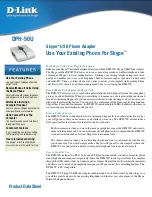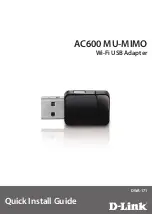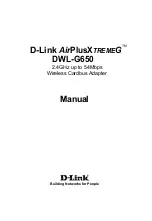
Linksys ATA Administration Guide
75
How VoIP-To-PSTN Calls Work
Configuring the PSTN (FXO) Gateway
VoIP callers can be authenticated by one of the following methods:
•
No Authentication—All callers are accepted for service.
•
PIN—Caller is prompted to enter a PIN right after the call is answered.
•
HTTP digest—SIP INVITE must contain a valid authorization header.
PSTN callers can be authenticated by one of the following methods:
•
No authentication—All callers are accepted for service.
•
PIN—Caller is prompted to enter a PIN right after the call is answered.
How VoIP-To-PSTN Calls Work
To obtain PSTN services through the SPA3102 or AG310 devices, the VoIP caller establishes a
connection with the PSTN Line by way of a standard SIP INVITE request addressed to the PSTN
Line. The PSTN Line can be configured to support one-stage and two-stage dialing as described
in the following sections.
One-Stage Dialing
One-stage dialing allows a call to be started over VoIP and then immediately get a dial tone on
the PSTN.
To use one-stage dialing, the Request-URI of the INVITE to the PSTN Line should have the form
<
Dialed-Number
>@<
SPA-Address
>, where <
Dialed-Number
> is the number dialed by the VoIP
caller, and <
SPA-Address
> is a valid address of the SPA3102 or AG310 device, such as
10.0.0.100:5061.
If the FXO port is currently in use (off-hook) or the PSTN line is being used by another extension,
the Linksys ATA device replies to the INVITE with a 503 response. Otherwise, it compares the
<
Dialed-Number
> with the
User ID
parameter of the PSTN Line. If they are the same, the Linksys
ATA device interprets this as a request for two-stage dialing (see the
”Two-Stage Dialing” section
on page 76
). If they are different, the Linksys ATA device processes the <
Dialed-Number
> using
the corresponding <
Dial Plan
>.
If dial plan processing fails, the Linksys ATA device replies with a 403 response. Otherwise, it
replies with a 200 and at the same time takes the FXO port off hook and dials the target number
returned after processing the dial plan.
NOTE:
If the
User ID parameter
on the PSTN Line is blank, the
Register
parameter should be
disabled for the PSTN Line.
If HTTP Digest Authentication is enabled, the Linksys ATA device challenges the INVITE with a
401 response if it does not have a valid Authorization header. The Authorization header should
include a <
User ID
n
> parameter, where n refers to one of eight VoIP user accounts that can be
configured on the Linksys ATA device. The credentials are computed based on the
corresponding password using Message Digest 5 (MD5). The <
User ID
n
> parameter must
















































